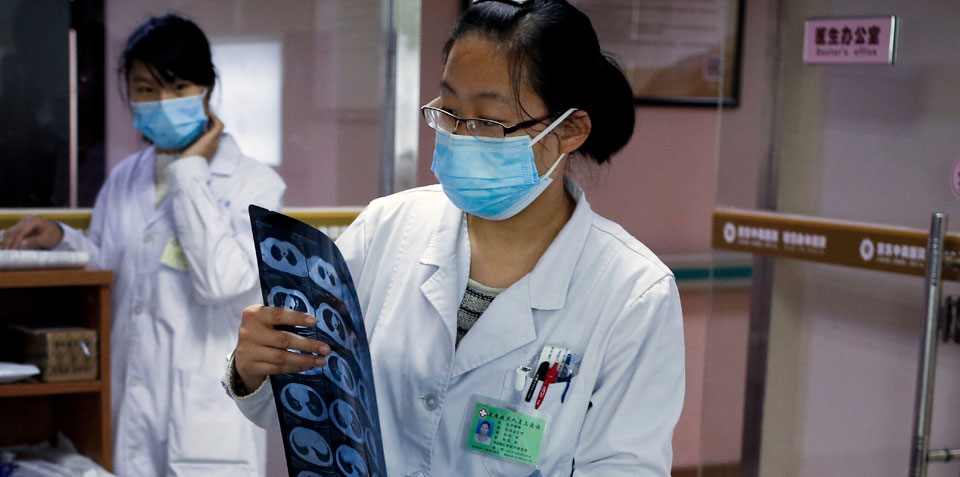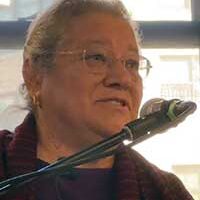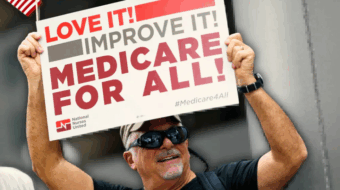
We are beginning to hear a lot of talk about Medicare for All, and we may wonder what could it look like.
I have always wanted us in the United States to have the kind of medical care that is affordable and puts the patient above profits. After experiencing that kind of system in China, I am even more in favor of Medicare for All.
After two days in China recently, I began to have excruciating pain on my back; having had kidney stones pass before, I recognized what it might be. My host took me to the emergency room. Although a visit to see China’s medical system was not on our tour itinerary, I was now going to get a first-hand view.
I was very apologetic about having caused such a disturbance, but my host was very positive and pointed out that now I would be able to see their medical system at work.
Arriving at the emergency room, the front desk immediately took my blood pressure and temperature as they were checking me in and asking what the problem was. They created a medical card, and I was then sent to the next desk area, in the same lobby. Blood was drawn, and I was asked to give a urine sample.
For less than half an hour, I sat in the lobby, waiting for my lab results. I thought to myself that at this point in the U.S., I would probably be sitting in the lobby still waiting just to see a doctor, but here I was halfway through the process of knowing what was really going on.
Once my lab results were completed, and about an hour and a half after my walking into the emergency room, I was taken to a small office where there were three doctors reviewing the blood results and deciding next steps. I do not think the three were just there for one patient, but it certainly was comforting that there were three opinions on the course of action. I was sent to get a CT Scan to confirm whether I did, in fact, have a kidney stone. With the help of my hosts, I was led to the area where this was to be done. I waited for my turn no more than half an hour; my name came up and I was given a full CT scan.
The scan confirmed I had a stone that was 5mm. I was sent to get an injection that would help move along the process of passing the stone and then to see a urologist who would determine if I needed any special medicine or procedures since the stone was quite large. Luckily, the doctor determined I didn’t need any other treatment. He prescribed plenty of water and pain medicine and said it could take up to two weeks for the stone to pass.
From start to finish, this whole process took about four hours. I have been to plenty of emergency rooms in the U.S. over the years, either for my children, parents, or friends. Never have I been in and out the door in four hours, with a diagnosis and treatment all done. Typically, at U.S. emergency rooms, my visits have been about nine hours, and at the end, I’m sent home with a list of follow-up appointments for tests and specialists.
How was this experience in China possible, you may ask? Well, when a system puts people before profits, it becomes clear just how possible it really is. Oh, and did I forget to mention that the emergency area was not empty but in fact packed with hundreds of people? Or that the line to see the specialist had even more patients? China is a country with close to 1.4 billion people; the U.S. has 325 million people, by comparison, so you can see why there were so many people at the hospital.
We know that in U.S. emergency rooms we rarely receive such care in such a short amount of time, and so you may be asking yourself: How much did that cost? Although my host offered to pay, I insisted that I cover the expenses. I was certainly worried about how expensive all those tests, scans, and consultations would be, but I could not in good consciousness leave the bill to someone else. When all the receipts were added up, the total came to $75. Yes, seventy-five dollars!
This kind of accessible and affordable health care is possible in our country, too, despite what the insurance industry claims. We should all be a part of supporting the efforts of the House Progressive Caucus, which formally unveiled its comprehensive Medicare for All legislation recently. Call your member of Congress to let them know you want them to support Medicare for All.
H.R.1384 would replace the private insurance industry and its 33 percent overhead share of the nation’s health care spending—along with its high co-pays, deductibles, and cost-shifting to workers—with a government-run system that covers far more people for a lot less money.
Have you had a similar experience with socialized medicine? Share it so that people can know that Medicare for All is possible this country.










